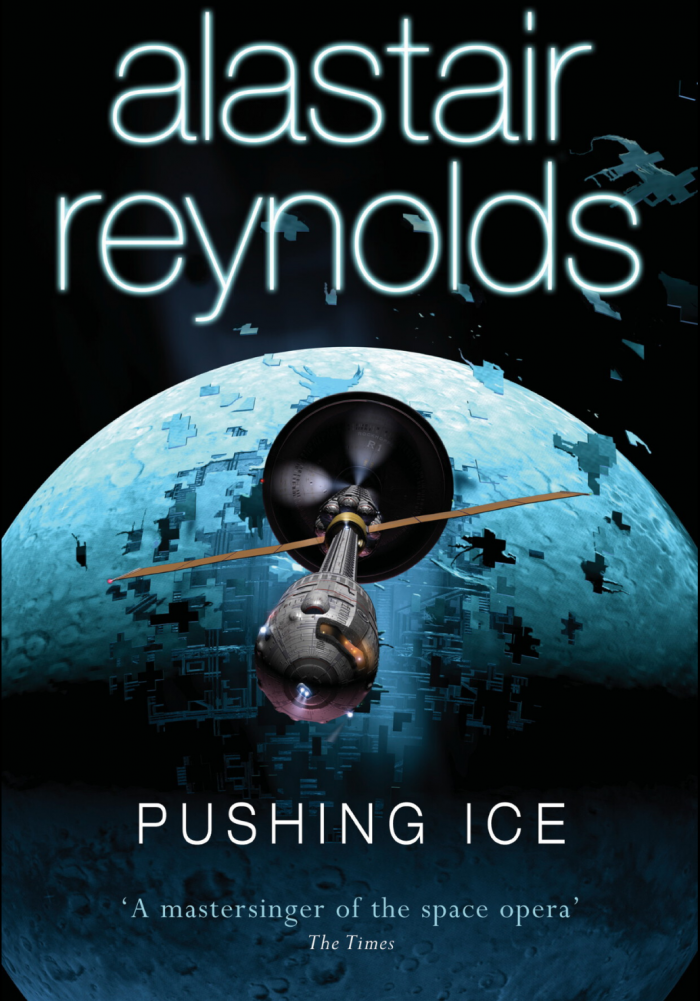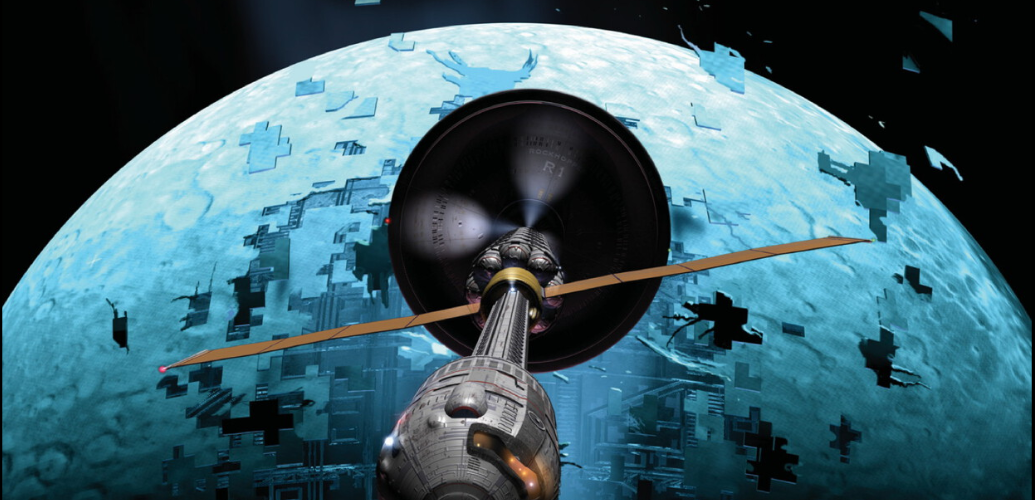I was greatly impressed by the first book of Alastair Reynolds' Revelation Space series. The second book turned out to be so cluttered that I didn't get to the third book at all. And somewhere in the back of my mind, I had tagged Reynolds => not terrible, but no frenzy either; seven out of ten tops.

'Pushing Ice', a 2005 novel, changes that quite a bit. It is very, very good. After the recent 'Ninefox Gambit' fiasco, I was a bit discouraged about exploring any SF titles and didn't quite know how to get out of that mental state. And then, out of the blue, one of the regular readers of this blog (privately a good pal forward slash colleague from a former job) pings me and asks if I've read 'Pushing Ice'. And since the gentleman had already suggested good titles to me several times before, I decided to give it a try.
And I absolutely do not regret it.
The story starts in...
Nope, can't write this. No point wasting a good surprise.
It is the next century, more or less, and mankind is trying to conquer the Solar System. To live, humans need water[citation needed]. Comets are often covered in a layer of thick ice (and some of them are made entirely of it), so humans have come up with the idea of towing these huge icy lumps to where there happens to be the greatest need for water.
In Greek mythology, Janus was the god of beginnings, gates, time, duality, transitions and endings. Nowadays, however, he gave his name to one of Saturn's satellites, which plays a major part in the book. One day, astronomers notice that Janus, without any feasible reason, descends from its orbit, in which it has tumbled since the beginning of time, and starts moving away from the Solar System. Moreover, it seems that manoeuvring its almost two quintillion kilograms in any direction is no more difficult than riding a scooter. So the thing needs to be examined up close.
It turns out that the only human space vehicle that has a chance of catching up with Janus (assuming it maintains its current speed and trajectory) is the Rockhopper, a rocketship specialising in towing ice.
We associate towing with pulling, but because, for some unknown reason, rockets have engines at the back and not at the front, the ice is in fact pushed and not pulled by these rockets. Hence the title of the book.
Scientists on Earth are asking the Rockhopper crew to abort their current mission to dig up ice on some dusty comet and try to catch up with Janus instead. There's enough fuel to come close the bugger, fly around it for four or five days, take pictures, maybe send some sort of probe to the surface, and then return home safely.
The crew, 145 people of the various specialisations, after a heated debate and the negotiation of additional bonuses, agrees to the plan and the race against the clock begins.
Will they make it in time? What will they find when they arrive?
I really don't want to give away any more details, because I would spoil the fun of the reading for those of you who don't know the book yet, but might want to read it. All I can say is that in the 500 pages of the book, Reynolds develops such a narrative that it could easily become two or three seasons of a TV series similar to "The Expanse". The story has a tremendous momentum and every time the reader thinks "this is it", it turns out that it is, in fact, not it at all.
My private rating: 10/10, without an ounce of doubt. If it weren't for Labyrinth 2, this would certainly be the best book I've read in 2023 so far.

Jeżeli chcesz do komentarza wstawić kod, użyj składni:
[code]
tutaj wstaw swój kod
[/code]
Jeżeli zrobisz literówkę lub zmienisz zdanie, możesz edytować komentarz po jego zatwierdzeniu.